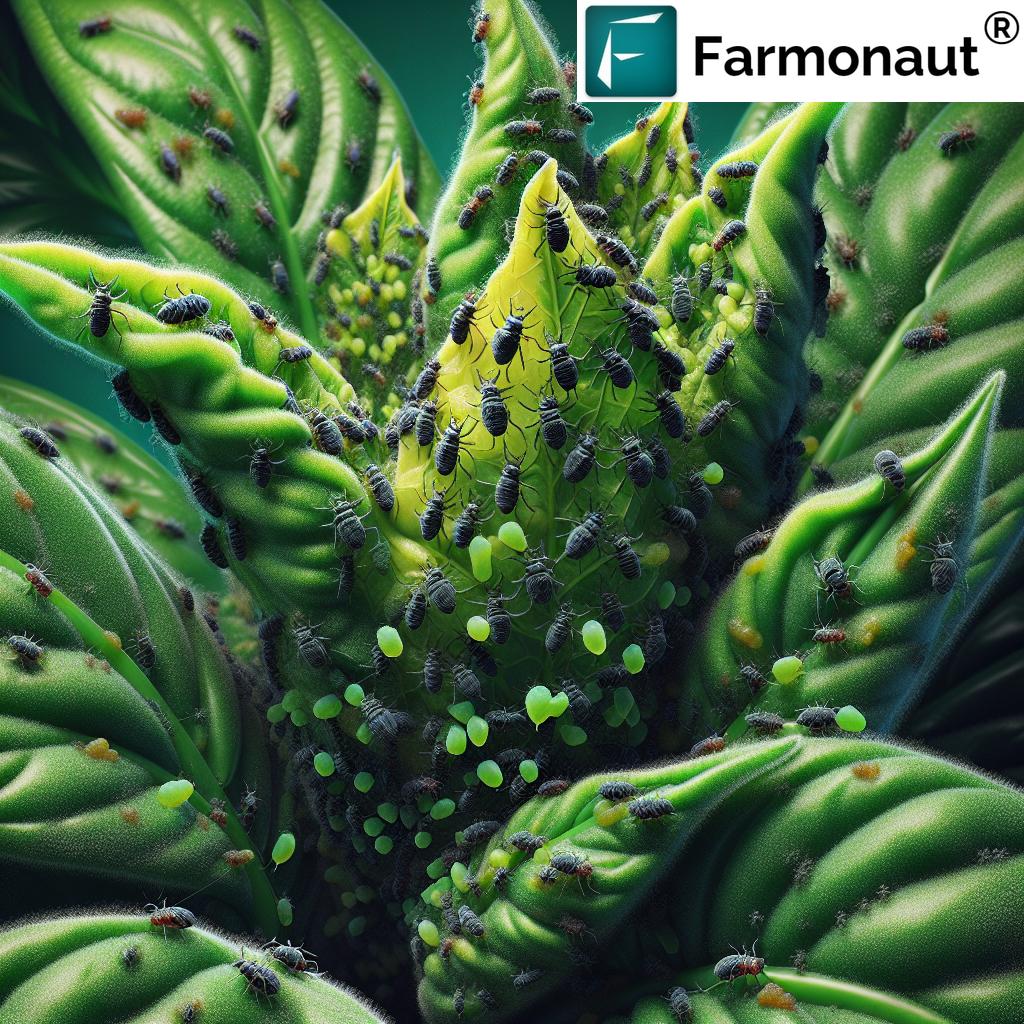Almond Milk Bad Environment: 2025 Environmental Impact
“It takes approximately 4 liters of water to produce a single almond, impacting almond milk’s environmental footprint.”
Introduction: Plant-Based Milk and the Environment
In recent years, the global shift towards plant-based milk alternatives has been heralded as an environmentally friendly option compared to traditional dairy. Almond milk and coconut milk have emerged as two of the most popular alternatives, both perceived as better choices for the environment and agriculture, especially within the context of mounting climate change concerns in 2025.
However, as demand for these products surges worldwide, it’s crucial to examine their environmental footprints—not only from a greenhouse gas perspective, but in terms of water and land use, farming practices, biodiversity, and the sustainability of different systems.
In this comprehensive analysis, we’ll navigate scientific data and the latest industry trends to understand the complex debate on almond milk bad environment, coconut milk environmental impact, and the pathways for sustainable milk production. We’ll also explore innovative technology tools, like those offered by us at Farmonaut, that can help monitor and reduce the environmental impact of agricultural choices worldwide.
Almond Milk Bad Environment: The Deep Dive
Almonds, Water, and the California Connection
The conversation around almond milk bad environment often starts with water—and for good reason. Did you know that it requires approximately 1.1 gallons (~4 liters) of water to produce a single almond? Given that almond milk is predominantly produced using nuts sourced from California—a region that supplies over 80% of the world’s almonds—this translates to vast quantities of water diverted from ecosystems and local agriculture.
California, with its recurrent drought-prone areas, is especially vulnerable to increasing frequency of water scarcity events within a changing climate. Intensive almond farming in the Central Valley consumes vast quantities of groundwater and surface water, placing additional stress on the state’s water systems. As climate change intensifies, the sector continues to grapple with balancing crop production and ecosystem stability.
Water Use, Scarcity, and Impact
- To produce 1 liter of almond milk, it’s estimated that 371 liters of water are required—nearly six times higher than oat milk.
- This high water demand raises serious concerns in agricultural regions already facing drought and increasing climate-driven scarcity.
- Water extraction for almond farming frequently leads to:
- Lowering of local groundwater levels
- Depletion of surface water resources
- Risk of impacting activities in nearby agriculture or cities
Monoculture, Soil Health, and Ecosystems
Intensive industrial-scale almond plantations are often developed as monocultures, leading to:
- Decreased biodiversity—fewer native plants and animals thrive within monoculture fields.
- Increased risk of soil erosion, due to the lack of organic ground cover.
- Disrupted soil health and reduced natural fertility, which can eventually degrade land productivity.
- Use of heavy pesticides and fertilizers, which—if unmanaged—may contaminate nearby water bodies and further impact ecosystem stability.
Almond Milk, Carbon Footprint, and Comparison
Although almond milk produces less greenhouse gas emissions compared to dairy milk, its environmental impact remains significant due to water use and changes in land use. The carbon cost from irrigation and farm operations adds up, especially when compared to crop alternatives like oat and soy.
Drought Events, Climate Change & Future Risks (2025 and Beyond)
By 2025, California and similar regions will continue to face increasing frequency of drought events due to climate change. It’s predicted that even the largest almond-producing areas may have to re-assess water allocations, possibly restricting farming activities and incentivizing more sustainable crop choices or water-efficient technologies.
Summary: Why Almond Milk’s Bad Environmental Rap Persists
- Water-intensive production in drought-prone California
- Monoculture farming impacts local ecosystems and biodiversity
- High input use (pesticides & fertilizer), risk of soil and water contamination
- Greenhouse gas emissions are lower than dairy, but not the most sustainable among plant milks
Coconut Milk Environmental Impact: The Tropical Perspective
“Coconut milk’s carbon emissions are up to 80% lower than those of conventional dairy milk, promoting sustainable agriculture.”
Global Spread: Where Coconut Milk Comes From
Coconut palms (Cocos nucifera) are ubiquitous in the tropical regions of Southeast Asia and the Indian Ocean—namely, the Philippines, Indonesia, and India. These countries supply a considerable volume of coconuts for both oil and milk production. Coconut agriculture supports millions of smallholder farmers in these tropical zones.
Coconut Farming, Land Use, and Deforestation
- Growing ‘coconut milk environmental impact’ is closely tied to the way coconut plantations are managed and expanded.
- To meet rising global demand, intensified farming practices have led to the conversion of forested land into coconut groves in some regions.
- This land use change potentially reduces biodiversity, threatens wildlife habitats, and disrupts local carbon sequestration capacities.
A key issue is that, unlike almonds, coconut milk is extracted primarily in tropical regions, which means:
- Expansion of cultivation can directly drive deforestation or reduce the suitability of land for diversified crop systems.
- Biodiverse tropical forests might be replaced by less diverse coconut monocultures.
- Soil degradation occurs when farming intensifies without adequate agroecological management, reducing soil fertility and resilience of local ecosystems.
Water Consumption: A Comparative Advantage?
Compared to almond trees, coconut palms require less water. They thrive in humid, tropical climates, which naturally supply the precipitation needed for growth. This means the overall water footprint of coconut milk is lower than that of almond milk.
However, land use change, soil degradation, and loss of diversified cropping systems remain major issues, especially in the context of expanding global demand.
Biodiversity, Pesticides & Local Impacts
- Pesticide and fertilizer use varies dramatically: Smallholder and organic coconut plantations generally use less chemical input, but larger plantations in some areas rely on agrochemicals.
- Soil health can suffer from intensive coconut monocultures—similar to industrial almond systems, though widespread mechanization is less common.
- There’s a risk of impacting local water bodies and ecosystems if farming is intensified without sustainable resource management.
Transportation, Processing & Global Supply Chains
Given that coconuts don’t grow in temperate regions, and most coconut milk is consumed in North America and Europe, the environmental cost of global transportation and processing is significant. This adds to the carbon footprint associated with supply chains.
Summary: Key Environmental Challenges for Coconut Milk
- Requires less water than almond milk, but poses risks to tropical biodiversity
- Main issues: land use change, soil fertility loss, and threat to diversified local farming systems
- Potential for deforestation if expansion is unmanaged
- Lower greenhouse gas emissions than dairy milk, but transportation carries a notable carbon cost
For food and beverage companies aiming to verify responsible coconut sourcing and environmental traceability, our blockchain-based product traceability solution (Farmonaut Traceability) delivers unparalleled transparency throughout your agricultural supply chains.
Comparative Environmental Impact Table: Almond, Coconut & More
Understanding the nuanced environmental impacts of each milk alternative is vital—especially for climate-conscious consumers and businesses in 2025. Below, our Comparative Environmental Impact Table summarizes key metrics for almond milk bad environment and coconut milk environmental impact, along with soy, oat, and dairy for clear reference.
| Milk Type | Estimated Water Usage (liters/liter of milk) |
Estimated Land Use (m²/liter) |
Estimated Greenhouse Gas Emissions (kg CO₂e/liter) |
Notes on Sustainable Agriculture Practices |
|---|---|---|---|---|
| Almond Milk | ~371 | ~0.5 | ~0.7 | Major water footprint; mostly grown in drought-prone California; high pesticide and fertilizer use typical in monoculture plantations. |
| Coconut Milk | ~50 | ~0.3 | ~0.3 | Less water use; threats from land use change, biodiversity loss in tropical regions; often smallholder-farmed, but expansion can cause deforestation. |
| Soy Milk | ~28 | ~0.2 | ~0.4 | Relatively low water, land and GHG emissions; issues with GMO/deforestation in South America, but sustainable/fair-trade soy available. |
| Oat Milk | ~48 | ~0.2 | ~0.2 | Low emissions and water use; can be grown in temperate regions, supporting local supply and sustainability. |
| Rice Milk | ~270 | ~0.3 | ~0.5 | Higher water and moderate GHG emission due to methane from rice paddies. |
| Dairy Milk | ~628 | ~1.2 | ~3.2 | High in all categories; methane emissions major concern; pasture and animal welfare issues worldwide. |
*Estimated values, based on recent scientific studies and meta-analyses published up to 2024. Actual impacts may vary according to agricultural practices and region.
Towards Sustainability: Exploring Regenerative Agriculture & Local Alternatives in 2025
Why the Quest for Eco-Friendly Milk is Complex
While global demand for plant-based milks has led to environmental advances over dairy, it’s clear that no single alternative is entirely impact-free. Almond milk’s bad environmental record stems mainly from its high water and resource use in drought-prone California. Coconut milk boasts lower water requirements but can drive deforestation and soil degradation if not managed carefully.
- Oat and soy milks—when locally sourced—represent sustainable alternatives with generally lower overall impact than either almond or coconut.
- Supporting diversified crop systems (not just monocultures) maintains ecosystem services, local biodiversity, and soil health.
- Regenerative practices—like agroforestry, integrated pest management, and water-efficient technology—help reduce negative impacts from crop cultivation.
Regenerative Farming’s Role in Plant Milk Production (2025 and Beyond)
By 2025, sustainable resource management for plant-based milk means:
- Prioritizing water-efficient crops for regions at risk of drought or water scarcity.
- Encouraging crop rotation, mixed plantings, and agro-ecological design to preserve soil nutrients and prevent erosion.
- Implementing traceability solutions to assure consumers that their plant-based products are responsibly sourced—protecting tropical forests, small farmers, and local biodiversity.
- Reducing emissions from transportation and supply chains by opting for local alternatives (e.g., oat or pea milk in temperate zones).
For organizations seeking carbon accounting and environmental tracking of milk production:
At Farmonaut, our carbon footprinting services offer detailed monitoring of greenhouse gas emissions spanning the full supply chain—ideal for organizations motivated by sustainability goals.
Choosing Sustainable Plant-Based Milks in 2025
- Favor plant-based milks grown locally or in regions well-suited to the crop.
- Seek certified sustainable or fair-trade options—especially for coconuts and soy, which may otherwise contribute to deforestation.
- Support brands and suppliers using traceability platforms and proven resource management technologies.
- Demand transparency in sourcing, environmental data, and agricultural practices.
Farmonaut’s Role in Monitoring Environmental Impact & Sustainable Agriculture
Farmonaut delivers a suite of satellite-based solutions to address challenges in agriculture resource management, environmental monitoring, and traceability—essential for the sustainable cultivation of milk alternatives like almond and coconut milk, especially as demand increases towards 2025 and beyond.
Key features of Farmonaut’s agri-tech offerings supporting sustainability goals:
- Satellite Monitoring: Real-time, multispectral crop observation for optimized irrigation, soil health, and ecosystem stability.
- AI-Based Environmental Impact Analysis: Our Jeevn AI platform drives customized environmental and productivity insights, ideal for monitoring almond, coconut, and diversified crop systems.
- Blockchain-Backed Traceability: Trace every step of agricultural products, ensuring transparency and accountability in coconut and almond supply chains.
- Resource Management & Precision Irrigation: Farmonaut’s platform pairs satellite imagery with advanced analytics for water-efficient farming and optimized resource allocation, crucial in drought-stricken global regions.
- Carbon Footprint Tracking: Our carbon footprint monitoring module provides actionable data for regulatory compliance and informed sustainability choices in milk production.
For larger organizations and agri-businesses seeking fleet, crop, and supply chain management at scale, our Large Scale Farm Management solutions (Agro Admin App) make everything from plantation health to environmental tracking seamless and data-driven.
Interested in integrating Farmonaut insights via API?
Explore our API platform
and detailed developer documentation.
Frequently Asked Questions (FAQ)
-
Why is almond milk considered bad for the environment?
Almond milk is often criticized for its high water usage, particularly because over 80% of commercial almonds are grown in California—a region frequently affected by drought. The amount of water required per almond (roughly 4 liters) makes almond milk production less sustainable in water-scarce regions. Additionally, large-scale monocultures threaten soil health, biodiversity, and may introduce chemical runoff to local water bodies.
-
How does coconut milk impact the environment?
Coconut milk requires less irrigation water but is most often produced from plantations in tropical regions like the Philippines, Indonesia, and India. Intensified coconut cultivation can cause deforestation, threaten biodiversity, and degrade soil health. Transportation to global markets also contributes to its environmental impact through increased carbon emissions.
-
Is oat milk or soy milk better for the environment than almond or coconut milk?
Generally, yes. Oat and soy milks tend to use less water and land per liter, and they have lower greenhouse gas emissions, especially when locally produced. Soy’s sustainability can be affected if sourced from regions with high deforestation rates, but certified responsible options exist.
-
How can supply chains for plant-based milks become more sustainable in 2025?
Innovations in traceability, real-time environmental monitoring, and regenerative agriculture can help. Adopting water-efficient crops in suitable regions, rotating crops, reducing monoculturization, and using technologies like Farmonaut’s carbon tracking and resource management platform are effective methods. Consumers can help by prioritizing local and certified-sustainable products.
-
Does switching to plant-based milk alternatives always benefit the environment?
Not always. While plant-based milks generally improve greenhouse gas and land use metrics compared to dairy, impacts such as water use (especially for almonds) or deforestation (coconuts, soy) must be considered. Diversifying crops, supporting fair-trade and organic options, and demanding transparency in sourcing all play a role.
-
Can technology help reduce the negative impacts of plant-based milk production?
Absolutely. Platforms that provide satellite-based crop monitoring, real-time soil and water analysis, and blockchain-based traceability (like those we offer at Farmonaut) help optimize irrigation, reduce resource waste, detect deforestation early, and promote transparent, sustainable agriculture—making it easier for supply chains and growers to operate responsibly.
-
Which plant-based milk is best for regenerative agriculture and ecosystem health?
Oat and pea milks are currently leading for minimizing negative environmental impacts, especially when farmed using regenerative practices. Important factors are: local suitability, minimal chemical input, low water use, and support for soil and ecosystem diversity.
Conclusion: A Nuanced Approach for Eco-Friendly Choices
As we progress through 2025 and beyond, it’s clear that plant-based milk choices are not “one size fits all” when it comes to their environmental footprint.
Almond milk faces justified scrutiny for its bad environmental impact—specifically due to massive water use in water-scarce regions, intensive farming, and monoculture risks. Meanwhile, coconut milk holds some advantages in water use but brings its own land management and biodiversity challenges, particularly in tropical supply countries.
For meaningful improvement in the environment and agriculture sector, the future in 2025 is about:
- Diversifying plant milk sources: Embracing oats, peas, and other local crops to reduce pressure on any single system or region.
- Adopting regenerative and precision agriculture: Using technology (like Farmonaut’s real-time satellite monitoring platform) to manage resource use, improve ecosystem health, and minimize environmental risks.
- Promoting transparency and traceability: Ensuring customers and stakeholders can be confident about where their plant milks come from, how they’re produced, and what impact they have—using solutions like our blockchain-backed traceability tools.
- Measuring and reducing carbon footprints: Commitment from individuals and companies to understand and shrink the full environmental costs of milk production, using tools such as Farmonaut’s carbon footprinting services.
In summary: The shift to plant-based milk can offer genuine environmental and social benefits—but only with a holistic, data-driven approach to agriculture, resource management, and supply chain transparency. Let’s make better-informed choices—for ourselves, our planet, and future generations.









